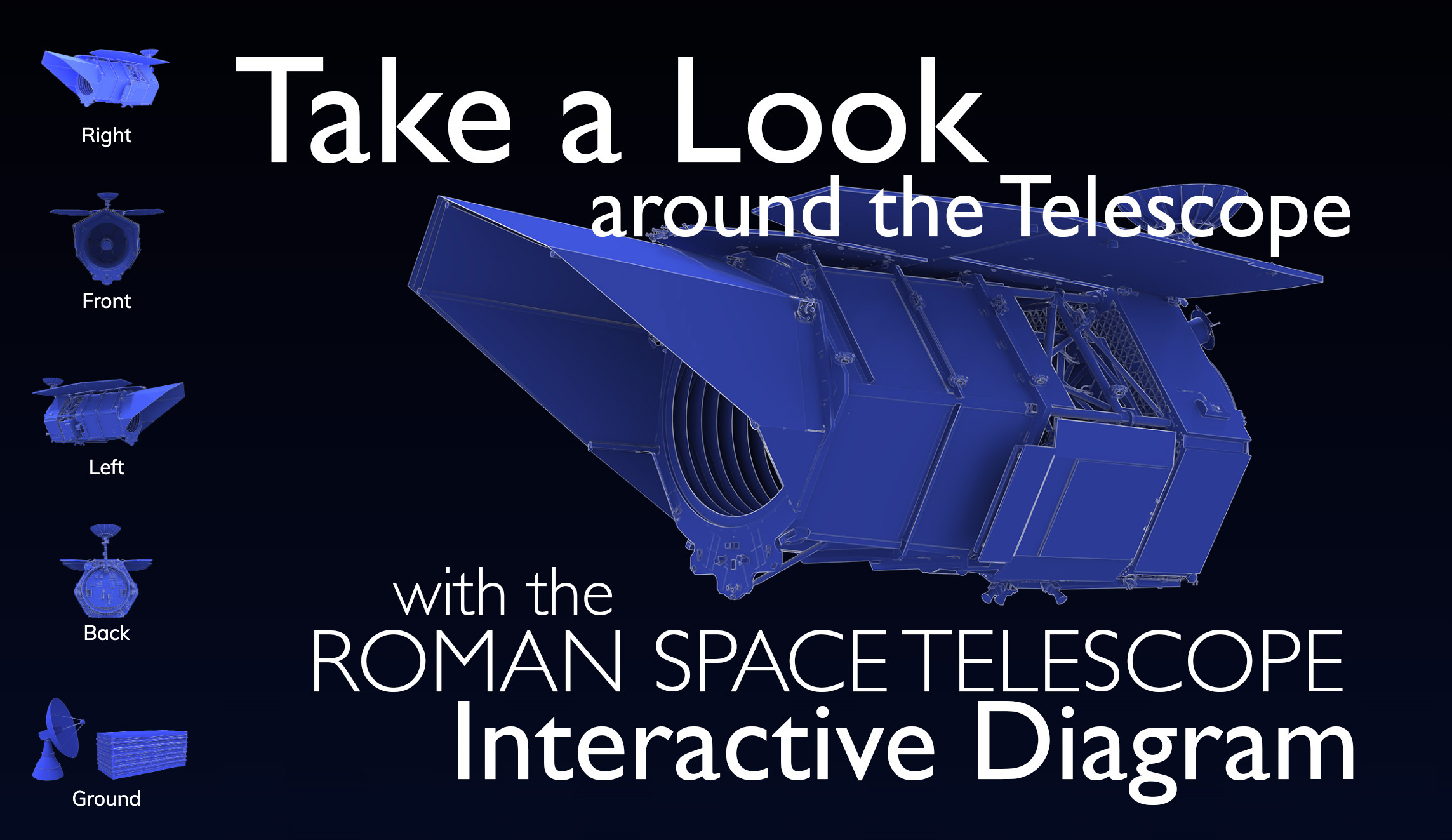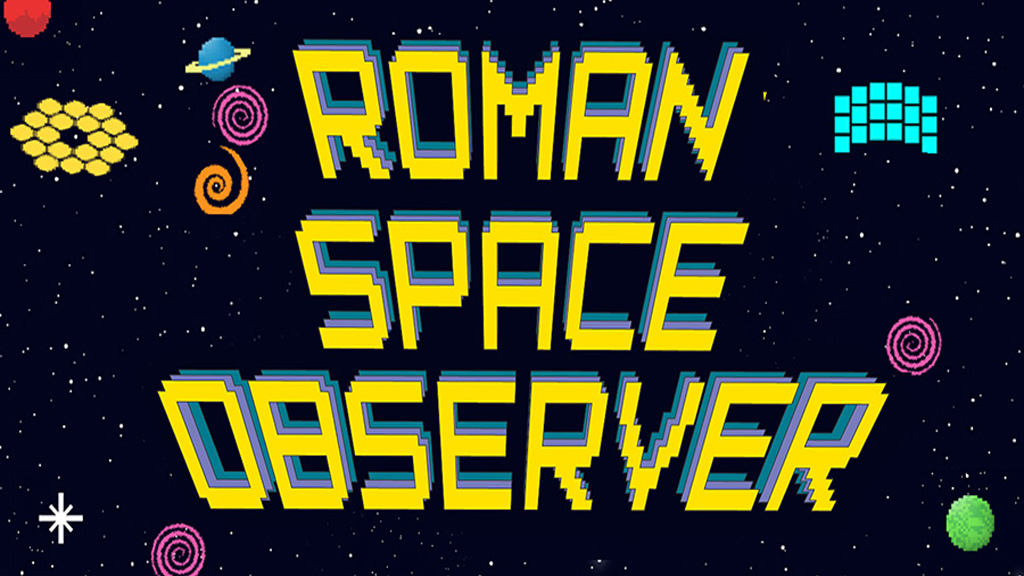Call for Community Input into the Definition of the Roman Space Telescope’s Core Community Surveys
Overview
The Nancy Grace Roman Space Telescope, NASA's next flagship observatory, is planned for launch in late 2026. The Roman Mission requests the astronomical community's input for the purpose of initiating the community-led definition of the Roman Space Telescope's Core Community Surveys.. Combined, these surveys are anticipated to use most of the observing time during Roman’s first five years. The cosmology and exoplanet science requirements for these surveys leave significant parameter space available to define the observational strategies (filters, depth, cadence, etc.) in a way that will enable a broad range of astrophysical investigations.
This call for input consisted of two independent avenues for members of the community to provide information on science drivers and the requirements they place on the design of the Core Community Surveys. The first avenue, submission of a short, one to two paragraph 'science pitch' (including a questionnaire) was due February 17, 2023, and resulted in more than 100 submissions. The second avenue, technically focused white papers describing what observing strategies are needed for a given science investigation were due by June 16, 2023. Over 70 submissions were received.
All input is being passed to the committees that will be formed of community members and tasked with defining the Core Community Surveys. We are now in the process of forming these committees.
Background
Roman's Wide Field Instrument (WFI) will have a large field of view (0.28 sq deg), Hubble-like sensitivity and resolution, and highly efficient survey operations, enabling survey speeds roughly 1000 times faster than achieved with Hubble. Roman's WFI observing program will include both Core Community Surveys (CCSs) and General Astrophysics surveys, defined by a combination of a community-led process and traditional peer-reviewed calls for proposals, respectively. The CCSs will be defined by the astronomical community and will include a High Latitude Wide Area survey, a High Latitude Time Domain survey, and a Galactic Bulge Time Domain survey.
The data from the CCSs will enable a host of general astrophysical investigations in addition to addressing the Roman Mission's science objectives related to cosmology and exoplanet demographics. As one specific example, in order to meet Roman's dark energy goals, a requirement on the design of the imaging component of the High Latitude Wide Area Survey is to enable precision measurements of the shapes of hundreds of millions of galaxies. This leaves open significant parameter space for the survey data to be relevant for other science areas. Depending on the choice of filters, the data may be more (or less) useful for studies of galaxy evolution. Depending on the chosen balance of area versus depth, there may be more (or less) opportunity for discovering new celestial objects that are rare per unit area. Moreover, all of these choices may affect how useful the survey data are for studies of more nearby objects, such as those belonging to the Milky Way halo or solar system. There will be many other such trades to consider, for all three Core Community Surveys.
The preceding example lists only a small subset of the science investigations that could be enabled by Roman’s survey data. By receiving input from the community on as wide a range of science use cases as possible, the committees tasked with defining each of the Core Community Surveys will be able to better understand what trade studies to conduct, and identify what additional community input is needed, in order to design surveys that best meet the needs of the entire astronomical community.
Purpose of Science Pitches and White Papers
The Roman Mission is intent on engaging the broad astronomical community in defining the CCSs in a way that will maximize their expansive scientific impact. The purpose the science pitches and white papers is to solicit from the community descriptions of specific scientific investigations that can be achieved with the CCSs, the observational strategies that will enable these investigations to be performed with a given CCS, and the metrics or figures of merit that can be used to assess whether an observational strategy will enable a particular investigation. The topics covered can include the drivers of the science requirements of the Roman CCSs (cosmology and exoplanet demographics) as well as other astrophysical investigations enabled by the CCSs.
- The aim of the Roman CCS science pitches was to capture, from a large cross-section of the community, the full breadth of science investigations possible with the Roman CCSs, as well as high level information on what aspects of survey design are most important for these investigations.
- The aim of the more detailed Roman CCS white papers is to compile quantitative discussions of CCS observation strategies, including what strategies will enable a given science investigation and the impact of survey design choices on the science, expressed via appropriate metrics or figures of merit.
Purpose of this request
The Roman Mission is intent on engaging the broad astronomical community in defining the CCSs in a way that will maximize their expansive scientific impact. This effort starts now, with this request for information from the community on the science investigations they wish to see enabled by the design of the CCSs. The purpose of this call is to solicit from the community descriptions of specific scientific investigations that can be achieved with the CCSs, the observational strategies that will enable these investigations to be performed with a given CCS, and the metrics or figures of merit that can be used to assess whether an observational strategy will enable a particular investigation. The topics covered can include the drivers of the science requirements of the Roman CCSs (cosmology and exoplanet demographics) as well as other astrophysical investigations enabled by the CCSs.
- The aim of the Roman CCS science pitches was to capture, from a large cross-section of the community, the full breadth of science investigations possible with the Roman CCSs, as well as high level information on what aspects of survey design are most important for these investigations.
- The aim of the more detailed Roman CCS white papers is to compile quantitative discussions of CCS observation strategies, including what strategies will enable a given science investigation and the impact of survey design choices on the science, expressed via appropriate metrics or figures of merit.
How your input will be used
All input from the community will be passed to the committees to be charged with defining the CCS observational strategies and will form the foundation on which the CCS definition committees begin their work. These committees, one for each CCS, will be formed in mid-2023. They will be composed of members of the astronomical community who represent the breadth of science the community wants to see enabled with each CCS. The initial community input, requested in the form of Roman CCS science pitches and white papers, will be used by the CCS definition committees to:
- identify the most promising synergies between general astrophysics and the drivers of the science requirements for each CCS,
- determine where additional investigative work is needed (e.g., to define appropriate metrics for a science investigation or determine if a science investigation is feasible within constraints),
- discover areas where community consensus-building is needed (e.g., where there are significant discrepancies in strategy for similar science investigations),
- target additional requests for community input, and
- inform the programs and agendas for later follow-up community workshops on the CCS survey definition.
The Roman CCS science pitches will provide the CCS definition committees with high level context of the breadth of science the community wishes to perform with each CCS. The Roman CCS white papers will provide a quantitative basis for the CCS committees to begin exploring the impact on the overall science return of various trades in observational strategy for each CCS. The process of defining the implementation of each CCS will involve continued community input.
A listing of the Roman CCS science pitch submissions are available. This will enable collaborations of community members with similar science interests in composing Roman CCS white papers, and inform the technical discussions of survey strategy in those white papers. Submitted Roman CCS white papers will also be made available to the science community after the deadline.
How does this fit with the Roman 2021 white paper call?
The previous Roman white paper call (due in late October 2021) pertained to General Astrophysics Survey observations (nominally at least 25% of the mission time, mostly to be selected through peer-reviewed competitions closer to launch and during operations) rather than Roman's CCSs. Specifically, that previous call solicited comments on whether to pre-select an Astrophysics Survey, as well as outlines of survey concepts which would benefit from being selected and defined well before Roman's launch (e.g., to enable synergistic observations with other facilities) and with scientific aims that cannot be accomplished with the CCSs (e.g., pointing at specific nearby galaxies or the Galactic plane). The present request instead pertains to maximizing the science that can be accomplished with Roman's CCSs.
The white papers received in response to the previous call were held pending the outcome of a review of the balance of Roman's observing program between the CCSs and General Astrophysics Surveys. This review was recommended by the Astro2020 report . The Roman Mission is now moving forward on the review of the Early-Definition Astrophysics Survey white papers, with a committee of community members charged with reviewing the submissions and making a recommendation to the project on whether one or more Early-Definition Astrophysics Surveys should be included in Roman's observing program. If the Roman Mission decides to move forward with an Early-Definition Astrophysics Survey, it will be defined through a community process, in a similar manner as the three CCSs.
Resources
For specific questions related to a submission, email both help@stsci.edu and roman-help@ipac.caltech.edu, with subject line: “Roman CCS community input.”











